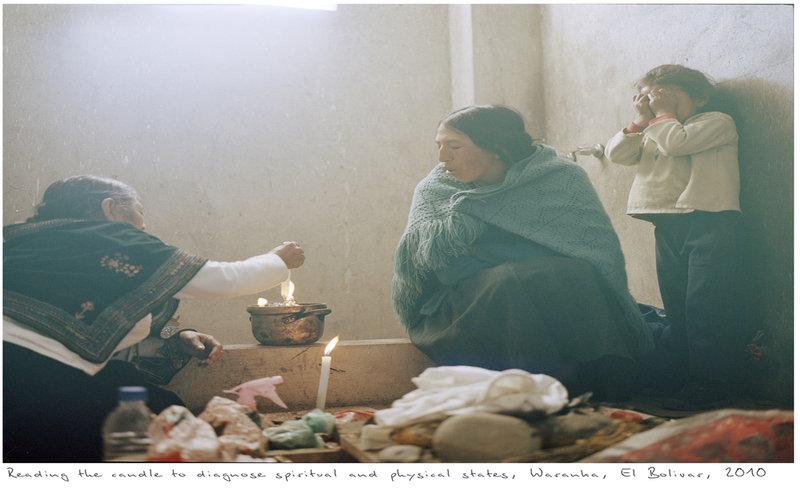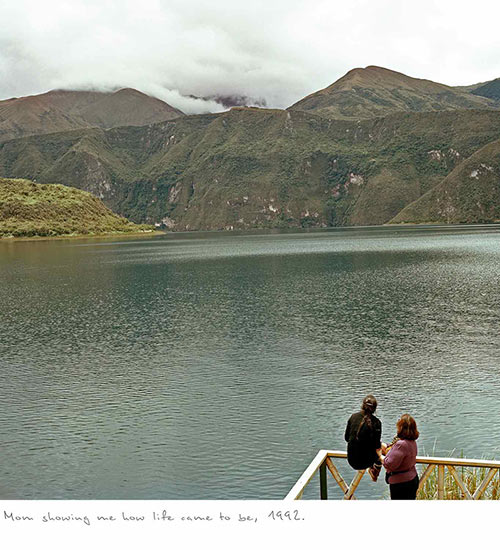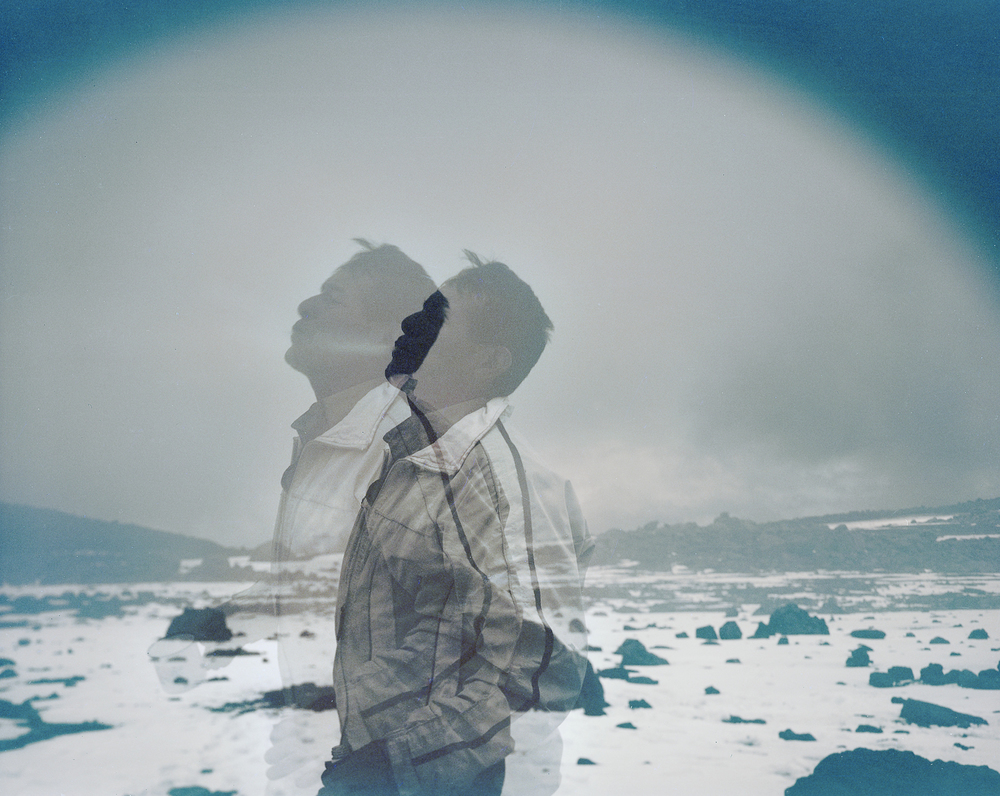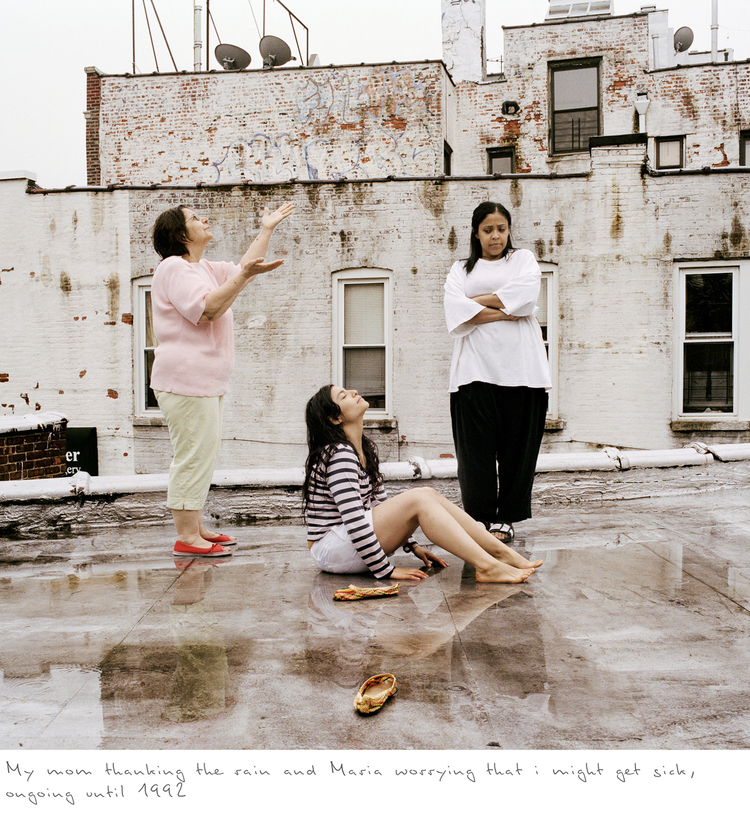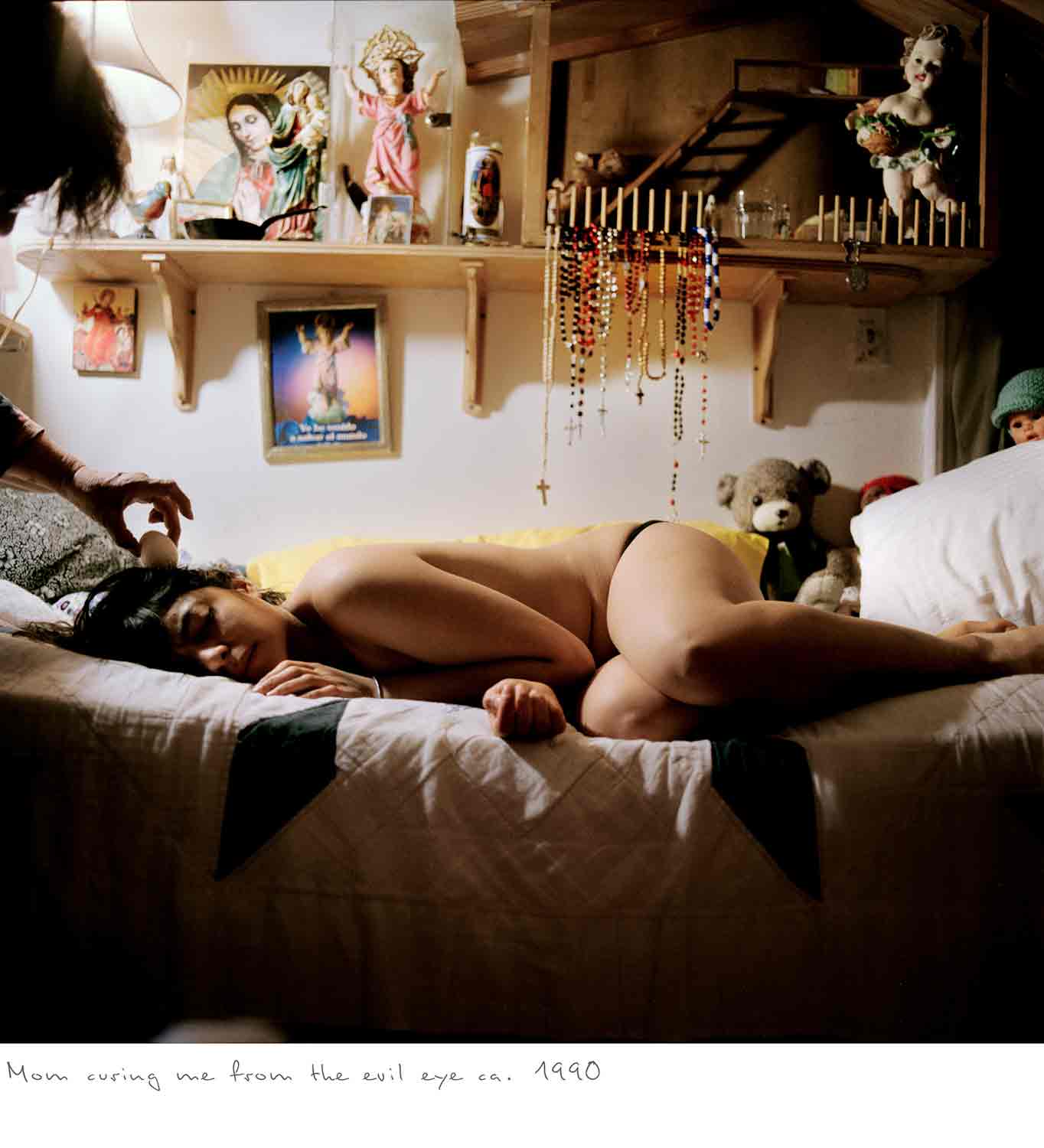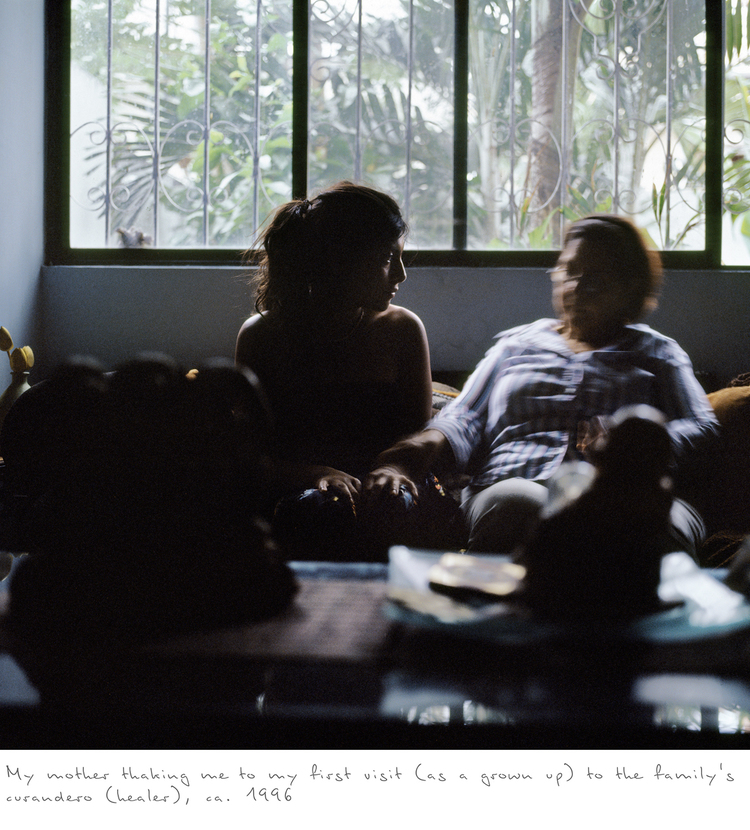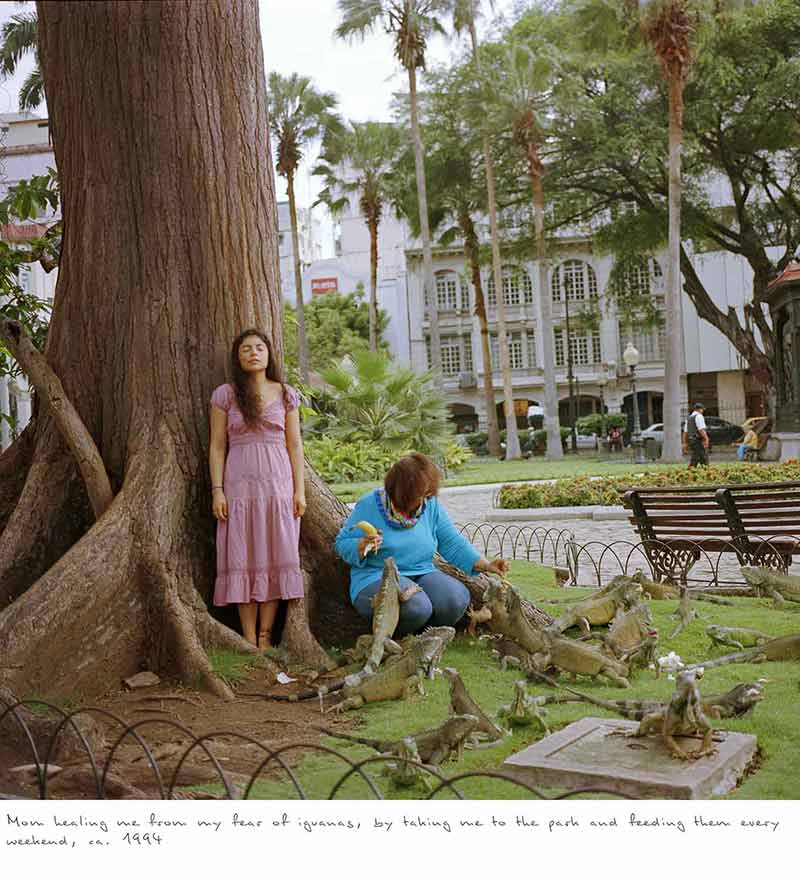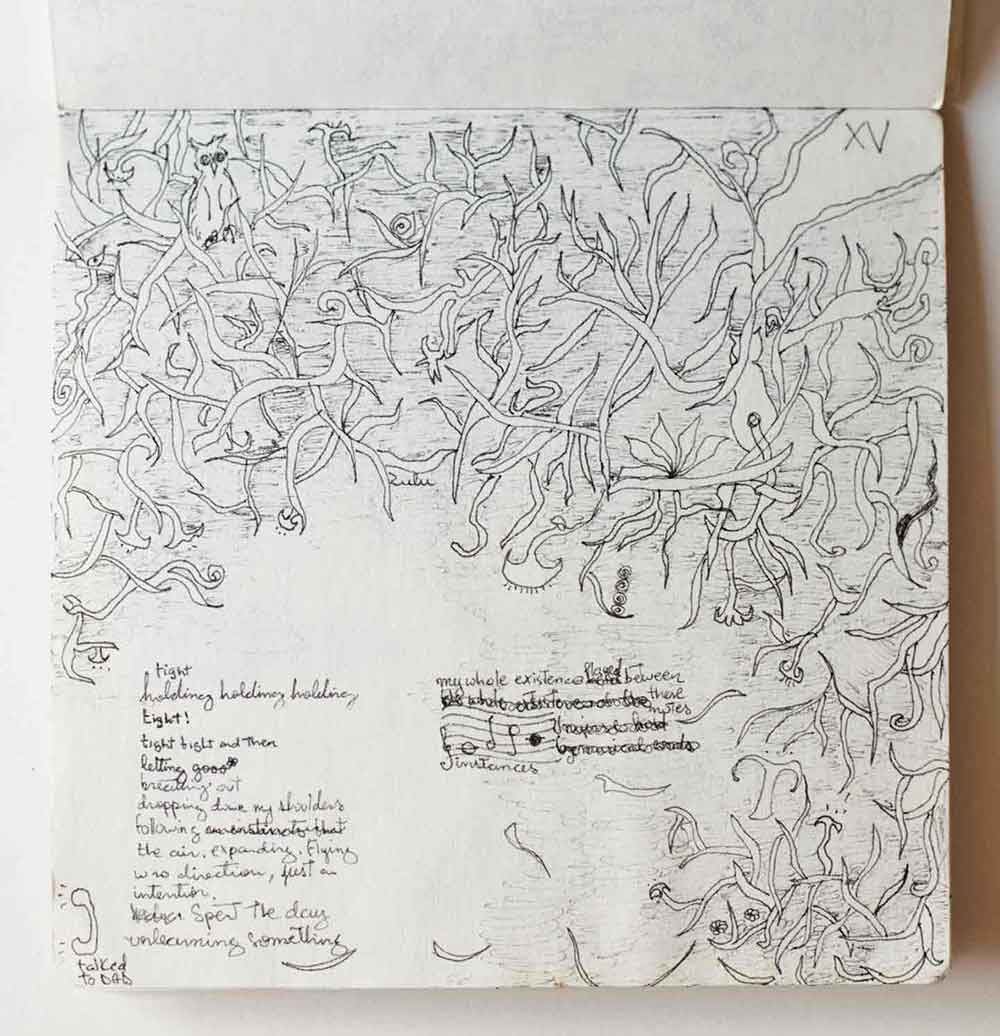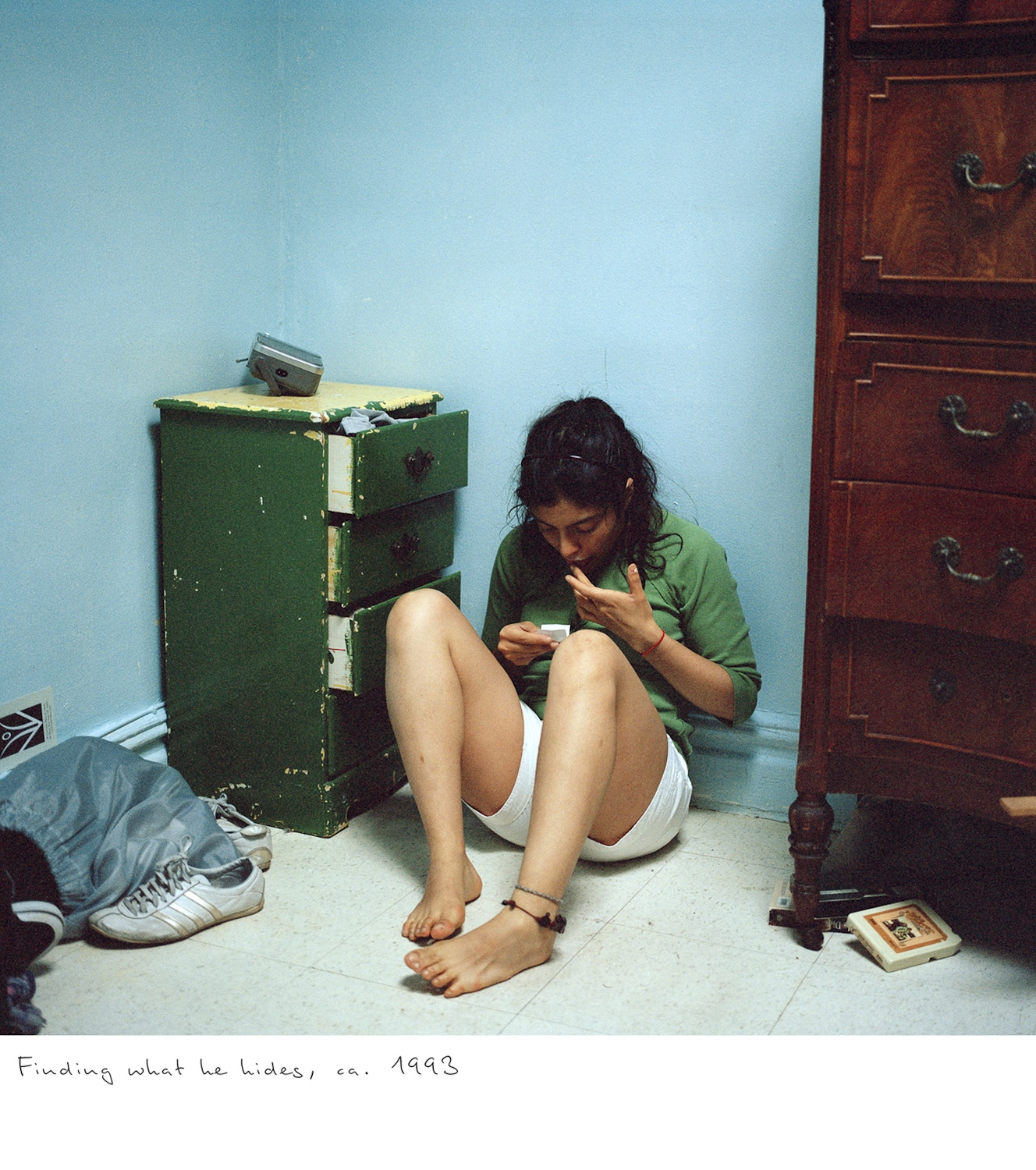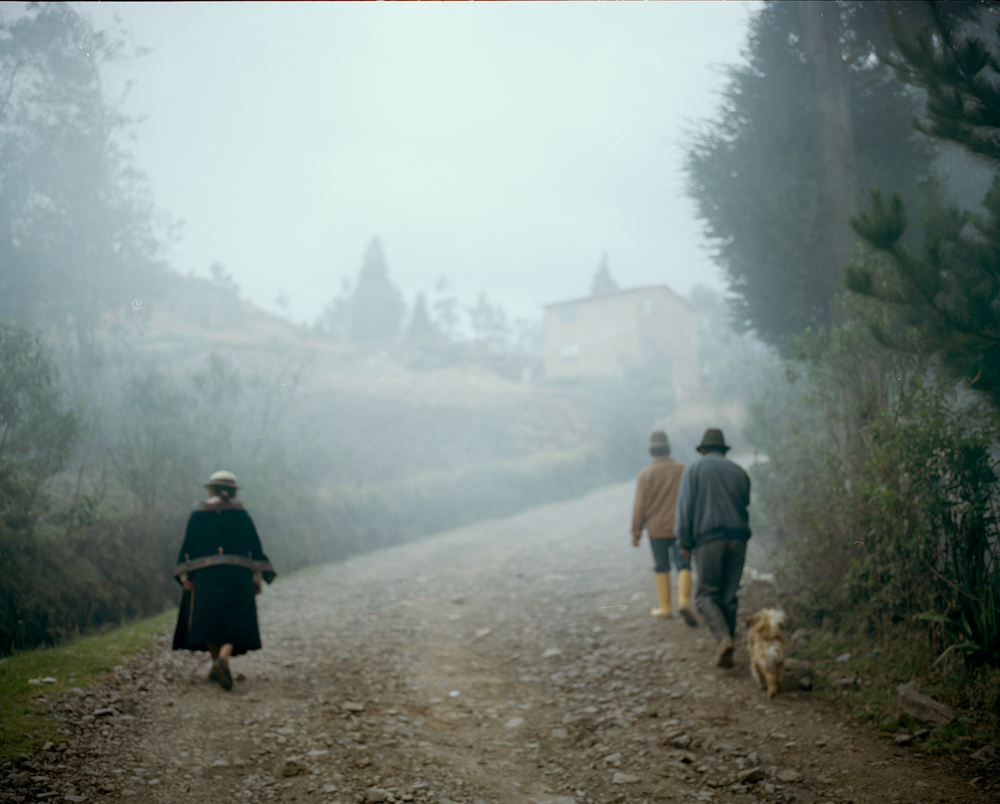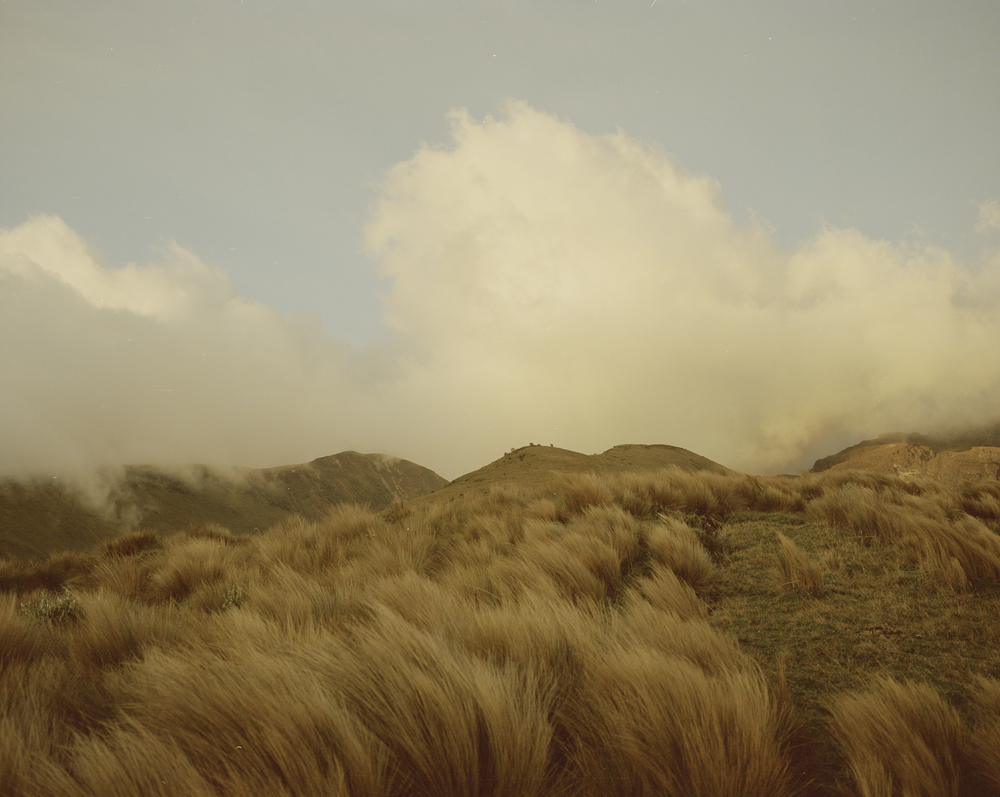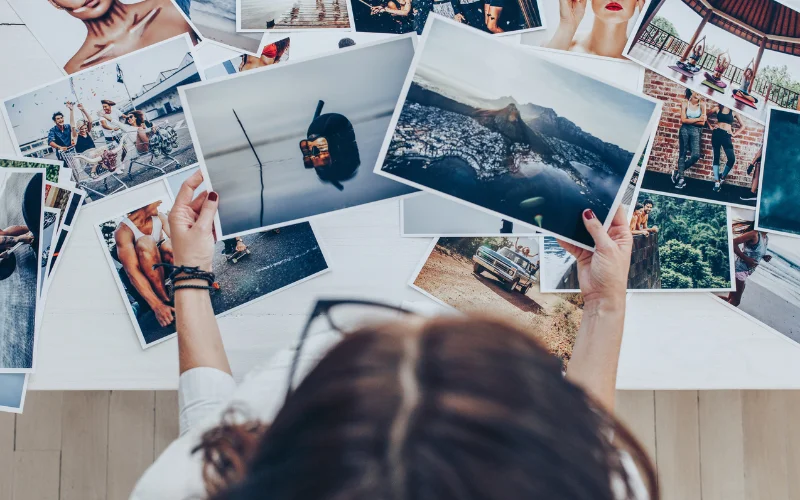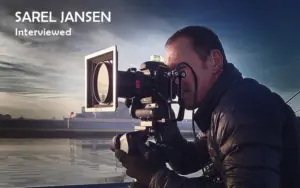How much of your life has already been forgotten? Which moments would you have remembered instead? Questions of this sort, ones about memory, sparked the Ecuadorian memory photography expert Karen Miranda Rivadeneira to start Other Stories, a project that pulls together her attempts at recreating memories of her childhood, ones that she considers “inaccessible” to her conscious mind or ones already ransacked by the years of time.
Each photograph has a line of words written into its bottom edge. These words give hints of the memory, or invention of one, that has been ciphered within. There’s a pliancy in memory. And Rivadeneira, questioning what it means to remember, stages and directs her family to help her recreate events that might have happened, if only because they’ve happened before (to her family, to others), but may have not actually happened, or happened only theoretically. “Other Stories is, if anything, the antithesis of childhood memories,” she says. Unadorned and softened in natural light, the photos exercise a mental juggling of her past. What’s remembered may only be a clever summary—and a photograph, the dress rehearsal of that remembering.
I spoke to Rivadeneira over email about Other Stories and her ideas on photography.
To take a question from Clarice Lispector, one of my favorite writers. Does shooting photography help make the anguish of living more bearable? Imagine she had asked you this. What would you say to her?
This reminds me of my time in the Amazon. I remember the unbearable heat, the thirst, the weight of the camera around my neck. I would walk for hours hoping I would be in the right place and time where something could happen. Sometimes it did and sometimes it did not. Random. Inexplicable. The face of a woman looking at the immeasurable wind, raptured by it; the beginning of the evening light and the cool breeze; the trace of life captured in the ground. I enjoyed photographing, but seeing life unfold in front of my eyes is the most rewarding of all things. I am in awe of life even when it’s not always clear to me. Photography allows me to be physically closer to a nature that otherwise would be unknown to me.
How did you get your start in photography? How would you describe your work?
I started using photography as my main creative medium after graduating from college. I moved to Ecuador where I was able to take time and figure out what I should be doing post school. Before I came to Ecuador I worked at a gallery that specialized in pre-Columbian and classical Latin American photography. I was exposed to the Mexican masters Bravo, Iturbide, Modotti, and Lopez, to name a few. I admired their compositions and subject matter, especially Graciela’s. I learned from them how to begin to observe people, light, objects in space, motion and the wisdom to know when all the variables are inside a shot.
I began by freelancing at the local newspaper. The photo assignments I received from the editor helped me understand photography from another viewpoint, and even now I still use them as exercises I share with students. I spent a couple of months at the newspaper until in 2007 I was awarded a fellowship to study in the Danish School of Journalism. That’s where I started to see how much I would dedicate my life to making images. And for your second question—there is not a way I can describe my work. But for me, photography is a way to see what I am also exploring with other parts of my being.
It seems fitting that Other Stories is about memory. I’ve asked a question about memory to many photographers before. And now I know this question will retire with you. So, without any pressure, I’d like to give you the final word. What’s your first — very first — childhood memory? Do you think this first visual memory and its emotional pull might have influenced your work?
I think that childhood memories that we evoke, regardless of their nature, will, without a doubt, have an emotional pull. However, Other Stories is, if anything, the antithesis of my childhood memories, because in order to do that body of work I had to disregard any memory I had and try to work from memories that were inaccessible to my conscious mind. Although I see your point and I can see how it makes sense that the project would originate from a personal memory.
Regarding the first memory, the earliest things I remember of my childhood are instances more than a particular event: running in the park, my brother playing with me, hiding under the table with my cousin, laying in the hammock. Simple little things.
I’d also like to ask you a few questions that you’ve already asked yourself, in a foreword to Umo, if you don’t mind. Here they are: “From what part of my body am I creating art? What is the muscle, the nerve, the emotion that fires out expression?” What would be your answer right now, at this moment? Where within you do you find your art?
I will have to ask you to:
Inhale,
[ ]
Exhale
[ ]
Here.
It’s not hard to see the importance of language in your photography. I could spend all day reading your words on your blog, while taking in your photography on your site. For example, I was emotional after reading the words in this photo (above). Could you explain how this photo was made from start to finish? Did the words arrive after the photo?
After creating the first nine images of O.S (which took approximately a year and half) I went back to Ecuador to shoot Iguanas, How Life Came to Be, War and Candle, The Visit, Rain (which I ended up choosing as the Queens background shot) and another one that never made it into the project. I came across an old collection of metal and classic rock CDs that were not mine. I was holding them for Tonzo, the person that is represented in this image. When I created OS I wasn’t thinking about how I would package my work or how I would present it to the world. I had an idea and that idea expanded into many directions. I thought about Tonzo and how I never gave him the credit or attention he deserved. I was too much of a teenager trying to figure who I was to see how much he needed my friendship. After he died I never fully forgave myself for not listening to him as I could have. Many years later, once I started this project of revisiting memories, I went back to that one, and it became clear that I had to do something with that memory. Perhaps, since I couldn’t honor him while being alive, I can honor him in this way now.
How does writing inform your photography? Which do you find yourself doing more often?
Writing helps me organize my thoughts, it helps me pinpoint where my thoughts are rotating. I have some texts that I have been working on and revisiting for years. I feel there is no rush with them. I am a slow writer. I can say that writing and photography are intertwined in the path of creating, but they can be very much their own independent modes of expression.
You also say drawing was the first language that spoke to you. What did drawing allow you to see or understand that wasn’t present in everyday language? Does drawing still influence your photography?
Drawing was the bridge between everyday language and the creative realm. I think we all have something that opens that door to us. Most kids use drawing before anything else—kids in the Amazon use the earth to draw. Photography is another way of drawing using light, and yes I am still strongly influenced by works on paper, especially the work of my close friends.
I found this sketch of yours on your blog. I think it’s a beautiful illustration of how you think. I can feel the color of your thoughts. Do many of your photos originate in sketches like these? Also, in it, you say you spent the day unlearning something. Do you remember what it was?
When you are sitting on a bus for hours, as I am at this moment, sketching sounds like the best thing to do. For years I would do those types of sketches on the subway on my way to school and later in my travels (later I realized I need to read more, so I stopped sketching as often). The one you are referring to is of my time at LightWorks. I was an artist in residence in 2012. and I was there mainly to work on the production of Other Stories. In my downtime away from the lab I wanted to do something that was not related to photography, so I sketched every day that I was there.
As to what I was unlearning, at that time I was thinking a lot about the idea of radical change through tiny steps, and how our bodies hold so much memory. It must be unlearning something memorized through the body, such as when I tilt my head when I am paying attention.
I’d like to give you another quote from Lispector, one that talks about memory and gets us back to Other Stories:
“To write often means remembering what never existed. So how can I know what has never existed? Like this: as if I were remembering. By an effort of memory, as if I had never been born. I was never born. I have never lived. But I remember, and remembering is like an open wound.”
In my mind, Other Stories seems like a translation of Lispector’s thoughts into a work of photography. You’ve made fictions out of remembering, shot memories that will never exist as complete truths. “An Effort of Memory” could have even titled your project. What do you think about this quote? Do you find any connections in it to Other Stories?
Absolutely, thank you for sharing that quote. I was introduced to Clarice in recent years. Similar to Castaneda, I knew there was a conversation there to begin, but it wasn’t the time. Now the time to dive into Clarice’s work has come, but I am not so interested in reading Castaneda anymore.
One last question. You’ve said that one of your role models in life is your family’s bittersweet laughs. I love that answer. Could you explain your answer more fully? How does your family’s bittersweet laughter inspire your work?
My family’s bittersweet laugh comes from my time living at Bliss St. with my aunts, my grandmother, and several women with children that left their imprints on the walls. It was a rich and deeply transformative time; a lot of awareness of my roots and my family, which blossomed into a greater idea of community. Here, I come to your first quote: the unbearable anguish of living is visceral because there is also an inextinguishable craving for life, a bittersweet laugh.
All images © Karen Miranda Rivadeneira
Check out all of Karen’s memory photography work on her website!

Nikki Brown Interviewed : Professional Life, Boudoir Shoot Tips & More
Nikki Brown is a professional boudoir photographer. Her portfolio highlights her skills in various types of photography, including boudoir, swimsuit,
